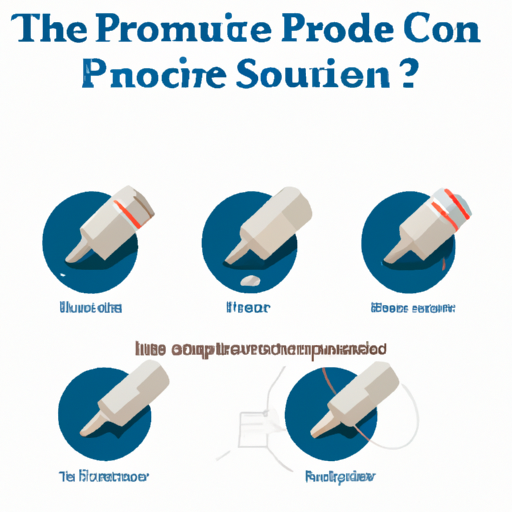

Title: Common Production Processes for Probe Interface: A Comprehensive Overview

1. Design and Prototyping: The production process for probe interfaces typically begins with design and prototyping. Design engineers work closely with customers to understand their specific requirements and develop a design that meets those needs. Computer-aided design (CAD) software is often employed to create detailed 3D models, ensuring precise dimensions and functionality. Prototyping allows for testing and validation of the design before moving forward with mass production.
2. Material Selection: Choosing the right materials is crucial for probe interface production. Factors such as electrical conductivity, durability, and resistance to environmental conditions must be considered. Common materials used include various metals (e.g., stainless steel, copper, and aluminum), plastics (e.g., polytetrafluoroethylene), and ceramics. Material selection depends on the intended application, cost considerations, and manufacturing processes involved.
3. Manufacturing Processes: a. Machining: Machining processes, such as milling, turning, and drilling, are commonly used to shape and refine the probe interface components. Computer numerical control (CNC) machines ensure high precision and repeatability. Machining is suitable for both metallic and plastic components, allowing for intricate designs and tight tolerances.
b. Injection Molding: Injection molding is a widely used process for producing plastic probe interface components. It involves injecting molten plastic into a mold cavity, allowing it to cool and solidify. Injection molding offers high production rates, cost-effectiveness, and the ability to create complex geometries. Post-processing steps, such as trimming and surface finishing, may be required.
c. Die Casting: Die casting is employed for manufacturing probe interface components made of metals like aluminum, zinc, or magnesium. Molten metal is injected into a die cavity under high pressure, resulting in a precise and detailed final product. Die casting offers excellent dimensional accuracy, high production rates, and good surface finishes.
d. Printed Circuit Board (PCB) Assembly: Many probe interfaces incorporate PCBs for signal processing and control. PCB assembly involves mounting electronic components onto the board, soldering them in place, and testing for functionality. Surface mount technology (SMT) and through-hole technology (THT) are commonly used for PCB assembly, depending on the design requirements.
4. Quality Control: Throughout the production process, quality control measures are essential to ensure the reliability and performance of probe interfaces. Inspection techniques, such as visual inspection, dimensional measurement, and electrical testing, are employed to identify any defects or deviations from specifications. Quality control processes help manufacturers identify and rectify issues early on, reducing the likelihood of faulty products reaching the market.
Conclusion: The production processes involved in manufacturing probe interfaces are diverse and require careful consideration of design, material selection, and manufacturing techniques. By understanding these processes, manufacturers can optimize their production lines, enhance product quality, and meet the ever-evolving demands of various industries. Continuous improvement and adherence to quality control measures are crucial to ensure the reliability and performance of probe interfaces in their intended applications.
Title: Common Production Processes for Probe Interface: A Comprehensive Overview

1. Design and Prototyping: The production process for probe interfaces typically begins with design and prototyping. Design engineers work closely with customers to understand their specific requirements and develop a design that meets those needs. Computer-aided design (CAD) software is often employed to create detailed 3D models, ensuring precise dimensions and functionality. Prototyping allows for testing and validation of the design before moving forward with mass production.
2. Material Selection: Choosing the right materials is crucial for probe interface production. Factors such as electrical conductivity, durability, and resistance to environmental conditions must be considered. Common materials used include various metals (e.g., stainless steel, copper, and aluminum), plastics (e.g., polytetrafluoroethylene), and ceramics. Material selection depends on the intended application, cost considerations, and manufacturing processes involved.
3. Manufacturing Processes: a. Machining: Machining processes, such as milling, turning, and drilling, are commonly used to shape and refine the probe interface components. Computer numerical control (CNC) machines ensure high precision and repeatability. Machining is suitable for both metallic and plastic components, allowing for intricate designs and tight tolerances.
b. Injection Molding: Injection molding is a widely used process for producing plastic probe interface components. It involves injecting molten plastic into a mold cavity, allowing it to cool and solidify. Injection molding offers high production rates, cost-effectiveness, and the ability to create complex geometries. Post-processing steps, such as trimming and surface finishing, may be required.
c. Die Casting: Die casting is employed for manufacturing probe interface components made of metals like aluminum, zinc, or magnesium. Molten metal is injected into a die cavity under high pressure, resulting in a precise and detailed final product. Die casting offers excellent dimensional accuracy, high production rates, and good surface finishes.
d. Printed Circuit Board (PCB) Assembly: Many probe interfaces incorporate PCBs for signal processing and control. PCB assembly involves mounting electronic components onto the board, soldering them in place, and testing for functionality. Surface mount technology (SMT) and through-hole technology (THT) are commonly used for PCB assembly, depending on the design requirements.
4. Quality Control: Throughout the production process, quality control measures are essential to ensure the reliability and performance of probe interfaces. Inspection techniques, such as visual inspection, dimensional measurement, and electrical testing, are employed to identify any defects or deviations from specifications. Quality control processes help manufacturers identify and rectify issues early on, reducing the likelihood of faulty products reaching the market.
Conclusion: The production processes involved in manufacturing probe interfaces are diverse and require careful consideration of design, material selection, and manufacturing techniques. By understanding these processes, manufacturers can optimize their production lines, enhance product quality, and meet the ever-evolving demands of various industries. Continuous improvement and adherence to quality control measures are crucial to ensure the reliability and performance of probe interfaces in their intended applications.